[Case Study] Instagram Marketing Expert And Coach Juan Galán
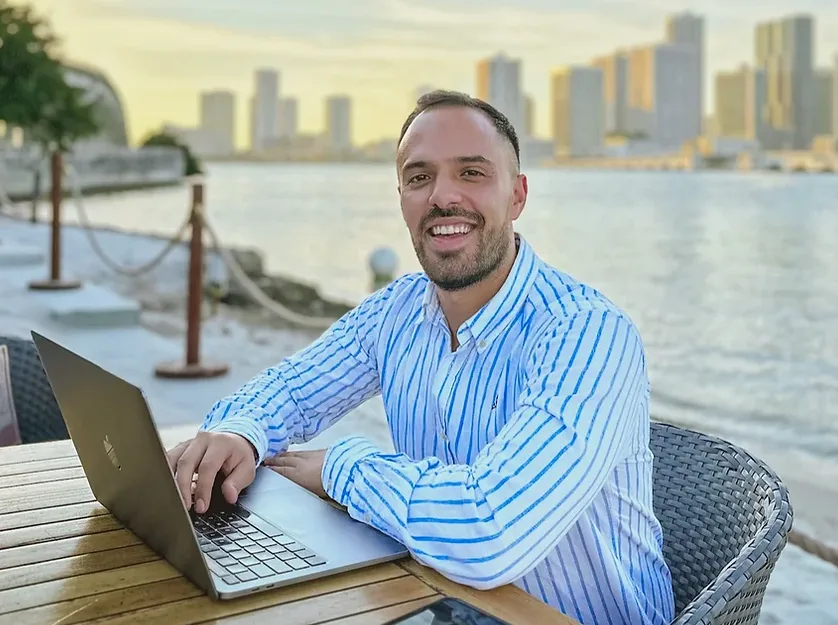
From Working At Starbucks To Building A 6-Figure Social Media Business
Hello, introduce yourself and briefly share what you do and your work
My name is Juan Galan. I am Colombian, but I’ve been living in Spain for almost 15 years. I have been in the marketing industry for over 10 years.
I started working in corporate jobs, and during my first years, I was kind of jumping from job to job because I wasn’t very fulfilled. And in the meantime, I was always working on building my Instagram presence on the side.
After two attempts with personal accounts, I launched my third account in September 2021. This time, I did it with a full business mindset, and that’s how IG Creator Academy was born. It is an online education space for creators, entrepreneurs, and business owners to learn how to build, grow, and monetize their brands using Instagram.
It was a huge success. It grew by thousands of followers every month, and I reached 100,000 followers in less than nine months.
That’s how my business began. With extensive experience in digital marketing and social media, I realized that every job I had led me to this moment. Today, I’ve worked with over 1,000 clients, including giants like Adobe and Semrush. My business has generated multiple six-figure incomes, launched successful digital products and coaching programs, and partnered with major brands.
It’s been a crazy ride—really exciting. I’m really looking forward to seeing what’s next.

My journey with Instagram started back in 2013 when I started my blog. And I didn’t make any money from it until 2021.
How were you introduced to the social media industry?
My dream as a teenager was always to work at Starbucks and the Hard Rock Cafe. As soon as I arrived in Barcelona, I got a job at Starbucks. I was super, super happy; it was my first job ever, and it was a great experience. I learned a lot about customer experience and customer support.
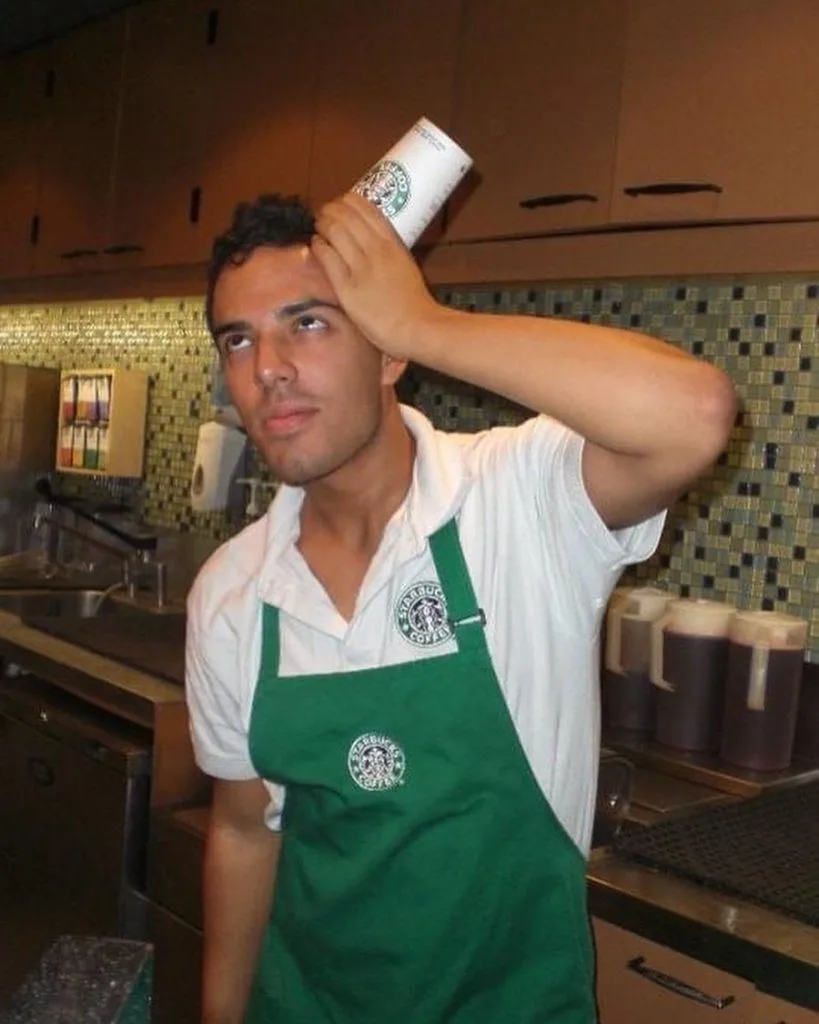
After that, I started at the Hard Rock Cafe. I used to be a huge fan of the Hard Rock Cafe. Every time I traveled, I would go to one and buy a pin or a T-shirt. It was like a fan moment to be hired there. After working at the retail shop for the first three years, they offered me a promotion to sales and marketing; even though that wasn’t my background at all, I saw it as a great opportunity.
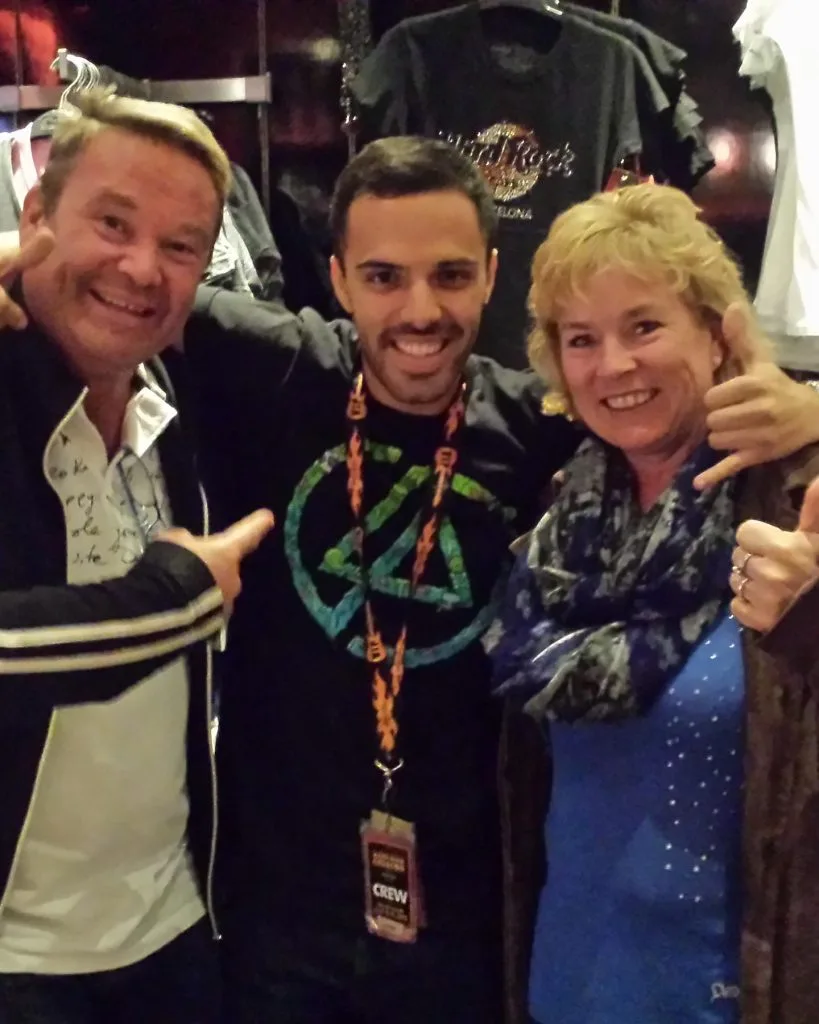
So, my journey in marketing in sales and marketing started at the Hard Rock Cafe. One of the many things that I handled was social media. It was 2014, and Instagram was still pretty new. Facebook was the big thing, and we didn’t have any creative freedom to post whatever or to create a strategy. We were just told this is what you need to post. These are the guidelines. There wasn’t any creative freedom when it came to content creation. But it was a great way of getting started in the industry.
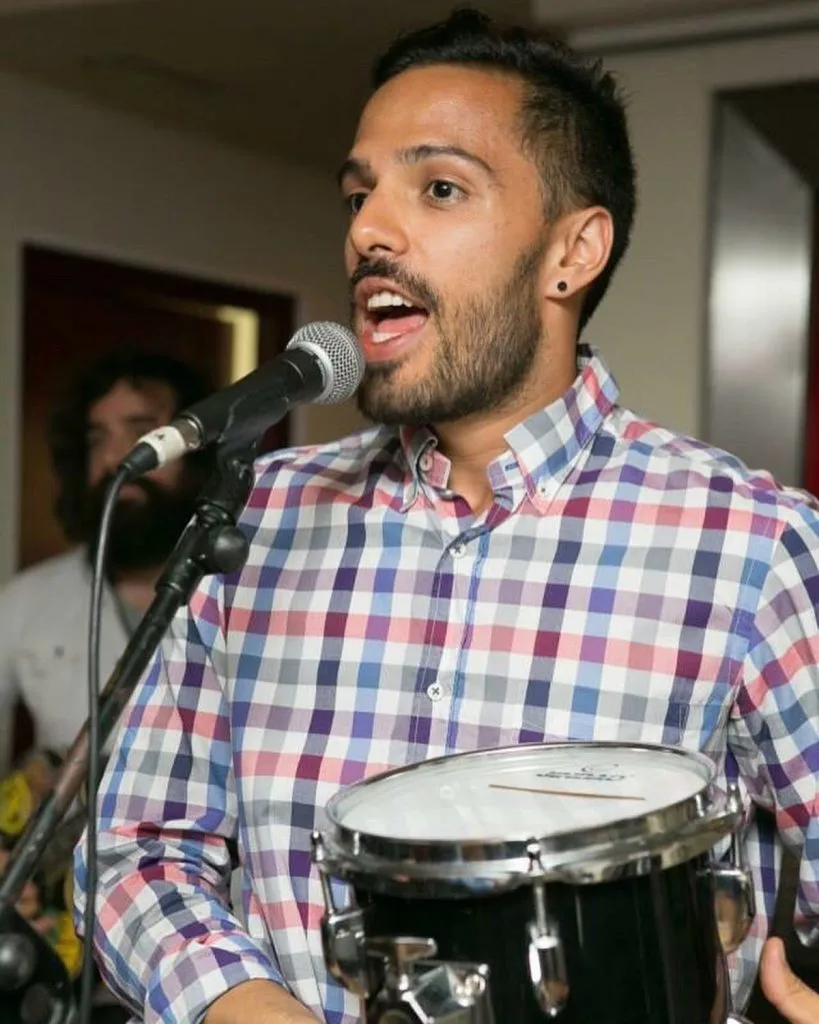
After that, I got sick of corporate and went to a startup. It was just me doing everything within marketing. That’s where I really learned how to grow audiences, manage marketing projects, work with content creators, and organize content interviews. It was a bit of everything, and it was really fun.
Following this, I’ve always had jobs that mainly focused on content or social media. Until the last job I had, which was also at a startup, the startup closed down. The project didn’t work out. We got furloughed, and that’s when I started freelancing.
Having multiple sources of income really gives me a little peace of mind because I don’t depend on just one thing.
How was your transition from employee to freelance?
Back then, I was always trying to build my Instagram presence, and through my first account, I got a mini client, if you can call it that. Someone in Canada saw my content and said, “Hey, I have a magazine, and I love what you do, and I need someone who can do exactly what you’re doing for your account but for my magazine’s account.” I was like, sure, why not? So, that was my first client way before I actually started freelancing officially.
But then, when we got furloughed, I knew deep in my heart that I didn’t want to go through the entire process of job interviews again. I knew that I was ready for something else. I had been wanting to become a digital nomad for a very long time. So, it was like, well, you know what? Life is giving me this opportunity, and I’m going to take it.
I still had that old client, so I started reaching out to people I had worked with. That helped me get two or three more clients, and I started building up my freelance portfolio.
I was doing everything, though. I was doing social media management, blog writing, photography, and translations. I feel that when you start in the freelance space, you kind of take anything that comes because you need the money.
But once you start building up, you also start learning about setting boundaries and changing from an employee mindset to a CEO and business owner mindset. That’s when things started shifting and I realized that I didn’t want to manage more accounts because, at the end of the day, it felt like I was still working for someone else. Even though it was on my own terms, I was still working for someone else and what I wanted was to have my own business. So that’s how I started doing IG Creator Academy.
How was the process of creating and launching your first product?
My first Instagram account, which was more around lifestyle, consisted of mostly Barcelona content, which is where I’m based. My first project was starting my blog. I built a really cool blog. Published a post every week and promoted it on Instagram. I tried to grow my blog and my Instagram presence, but I didn’t have the right strategy, so I had to go back to work. And I kind of abandoned that project. It was my first failed project, but it was a great practice and a great exercise to create content.
My second account was focused on the travel space, and I launched three different things. The first was a preset pack. Presets were pretty popular back then. They were basically photo filters that you sold, and people could apply them to their photos. I think I sold maybe two only.
Then I also launched prints of my photography prints. I didn’t sell any.
But through this account, I did get a lot of photoshoot bookings from people coming to Barcelona. They were getting in touch, and they wanted me to take them to the Instagram places here. And I was actually making good money from that—not enough to generate a full-time income from it, but it was quite decent.
This was around 2020, and I started to see digital marketers, social media marketers, and content creators teaching or sharing their knowledge and expertise on Instagram and TikTok. And right after COVID, they were growing fast and starting to make a lot of money through coaching and products. And I felt like I had a lot of experience and expertise. I had launched many things. I had created a lot of content. I worked with different brands in different industries. And I felt that I also could provide value to my audience. So, I shifted my niche from travel to social media marketing on content tips.
I launched a beta coaching program, and I got my first clients and started working with them. However, it was confusing for the algorithm because it was a travel account. I was still showing travel content but also social media marketing tips and content creation tips. So that’s when I decided to leave that one just as travel as it had always been and started IG Creator Academy.
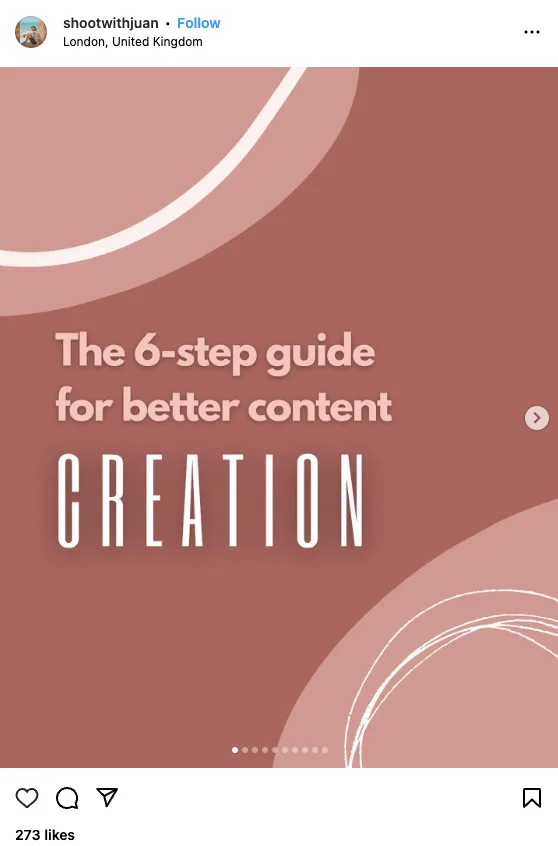
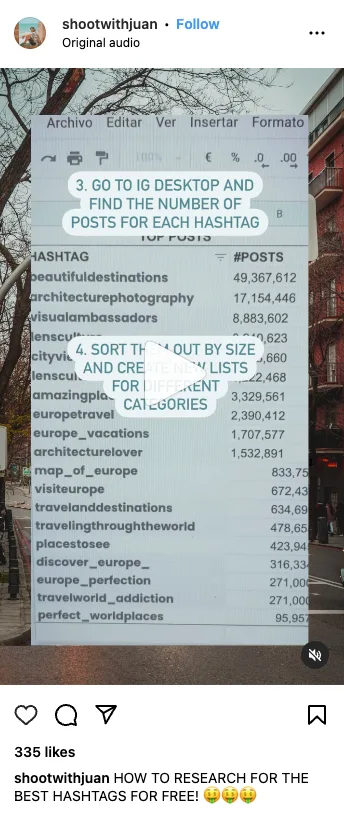
And since you launched the IG Creator Academy, could you share with us how the business has evolved?
I launched IG Creator Academy in September 2021, and in 2022, its first full year, it generated six figures. I was super happy and excited that I had been able to achieve so much within the first year, but it wasn’t really the first year because it goes back to my first years as a freelancer. It even goes back to when I started my blog. I always tell people that my journey with Instagram started back in 2013-2014 when I started my blog. And I didn’t make any money from it until 2021, basically.
Before the IG Creator Academy, I made around $2k – $3k per month from freelance projects + coaching but not from presents and prints I only did like $24. Also, this was very inconsistent. Some months, I’d make $1k, some others $3k, and on top of that, I was working super long hours. And it was good back then, because it was the first time I was making good money through Instagram, but still, I wasn’t making a full-time income to live off that.
And I do have to say as well that I have multiple sources of income. Those numbers come from working with brands, affiliates, coaching, digital products, and courses. Some people’s advice is to do just one thing and stick to it. And if that works for them that’s great. But in my case, having multiple sources of income really gives me a little peace of mind because I don’t depend on just one thing, and I was able to grow them all at the same time.
Anyone building an online business should focus on long-form content and what I call the primary channels, where you don’t compete with algorithms.
That’s a great strategy. Don’t put all your eggs in the same basket. And what’s your process behind creating a digital product that will eventually become a new revenue stream?
There are so many different types of products. Low-ticket products can be anything from an e-book to a mini course or a 60-minute workshop. Then there are high-ticket products, which can be more comprehensive courses that can take months to build.
Let’s use the most recent one that I just created as an example. It’s a digital product about growing an Instagram account with AI. I created it based on my own experience—I started a new account, and I basically did the whole thing with AI.
I created my profile with AI. The bio, the content pillars, and the content that I’m making are all AI-generated. And it’s been growing really fast. I grew 10k followers in 8 weeks and 90% of the heavy work was done by AI.
Since I created that account, many people have asked me how I do it. So, I thought I’d create a mini-course on it. I had the whole process already laid out. I just needed to put it into a document and record a few tutorials.
For that, I used Loom, a screen recording tool. In those videos, I walk people through the entire process of building and growing my account.
I recorded the whole process and organized it into different steps. It was very, very simple. It’s a very simple product, but it’s also a mini-course, which means it is low-ticket.
I use Skool, a more community-driven platform, to host my courses. Skool’s whole meaning is building paid communities, but within the paid communities, you can host courses. I host all my different courses there. When anyone joins my paid programs, whether it’s my high-ticket or low-ticket, they get added to the community.
Which social media channels have you had the most success with?
Instagram is my main channel, but I believe in long-form content’s power. I feel that anyone building an online business should focus on long-form content and what I call the primary channels, where you don’t compete with algorithms like on Instagram, algorithms are changing all the time based on people’s behaviors, which is normal. But on platforms like YouTube, a podcast, or a blog; you can position your business much better because these platforms give you authority, credibility, and better positioning.
So, my primary channel is my blog. I love blogging, I started a blog many years ago. Now I blog about social media and AI, and I really enjoy it. I’m also on YouTube, which I see as a very powerful tool for the long run; it’s taken me a very long time to grow an audience there, even though I’m posting videos every week. But I know it’s a long game, and I really like creating long-form videos.
Those are my two core channels. And then I have Instagram, where I built my community, but I’m always driving my audience and traffic to my YouTube channel or blog. I also have other secondary channels, like Pinterest and TikTok, where I post because I have content to share there, but it’s not like I’m using them strategically.
I have an email list as well that I email every week, multiple times per week. Email marketing is super powerful. In fact, I just did a pre-launch for my course that’s coming out tomorrow, but I just launched it to my email list and already sold out the spots I had available. Email is really, really powerful.
What would you recommend to someone who wants to become a social media professional?
This is very cliche, but find your niche. Choose one topic that you know you’re really good at, that you can talk about for hours without planning, that you’re passionate about, and that there is a market need for. Do some research and use AI tools to help you with that.
Find that intersection between what you’re good at, what you’re passionate about, and what people need. Most importantly, what people need because that’s what’s going to give you the money, right?
Once you find that, start creating content. Choose one channel. In my opinion, Instagram is the easiest one to build up and also because you can build community. And you have all the different placements like stories, lives, reels, etcetera.
Choose one topic you’re good at and start creating content. The more content you post, the more likely you’ll start growing. You’ll also get better at content creation, which will help you see what types of content resonate more with the audience you’re building.
I would just go all in into content creation for at least 90 days. Try to post every day for 90 days. If you can post two times per day, even better. Once you start building that audience, create an offer and test it. It doesn’t have to be a $2,000 product or service. It can be a $27 product for the audience that you’ve been nurturing for 90 days already one step further and test.
Don’t quit if you’ve been posting consistently for 90 days and you haven’t experienced exponential growth. Don’t quit if you launch something and it doesn’t work out at first, try something else.
When I launched IG Creator Academy in September 2021, I had 40,000 followers, I launched a high-ticket coaching program. It was $1,500 for 12 weeks of coaching with me, and I had zero signups. I could have just quit there and be like, this is not for me. But that experience led me to think about the next project, the next idea.
What are your favorite tools to run your business?
ClickUp is my calendar, where I create all the content. I work with an assistant and a video editor, so we communicate within ClickUp; I really like that. I actually hired someone to set it up for me because it’s not that I’m not capable, but it would have taken me a lot of time to understand how it works because it’s not like a simple tool. It’s complex. It’s robust, but it’s really good.
ChatGPT Plus. I do everything with ChatGPT. Everything.
Metricool. I schedule all the content for LinkedIn, Facebook, and YouTube Shorts through Metricool, which helps me stay consistent with my content output.
CapCut. I love how simple it is to edit videos on CapCut. I edit all my Reels there, and I like to keep them very simple. You’ll never see a Reel of mine hyper-edited or these quick transitions and sound effects. I just keep them very simple. And I love that CapCut allows you to do that.
I use Opus Clip to repurpose my YouTube videos into short-form videos that I then post on Shorts, LinkedIn, Pinterest, and TikTok.
I’ve been loving Fathom AI. It joins all your meetings, Google Meet or Zoom, records the call, transcribes it, and creates summaries and action steps. It’s really good as a coach, for example, when you jump on calls with people and don’t want to take notes because you want to have your full attention on them. Then you have those summaries and action steps, which are really, really cool. And it’s free.
And, as I mentioned before, I use Skool to host my paid community and courses.
And last but not least, where are all the places people can find you?
- Main Instagram account: ig.creatoracademy
- New AI Instagram account: ai.creatoracademy
- YouTube channel: igcreatoracademy
- Website: igcreatoracademy.com you can find everything about me. All my programs and blogs are there.

